13 Best Amano Shrimp Tank Mates (With Pictures)
For more than a decade, Amano Shrimps have attracted hobbyists because of their ability to eat vast amounts of algae.
You can easily recognize this fish by their grayish/transparent body.
Along the length of Amano Shrimp’s body, you will notice a long line of grey/blue or brown/red dots.
These dots can vary in color depending on what you feed these Shrimps.
If they are mostly fed on algae as well as other greens, then you will notice their dots have a green tint.
Also, their tail is translucent.
Surely, you already must be interested in adopting these Shrimps.
And, the next question in your mind must be, what will make the best Amano Shrimp tank mates?
Well, you have quite a few choices, and we shall learn about them right away.
Table of Contents
Bushynose Plecos
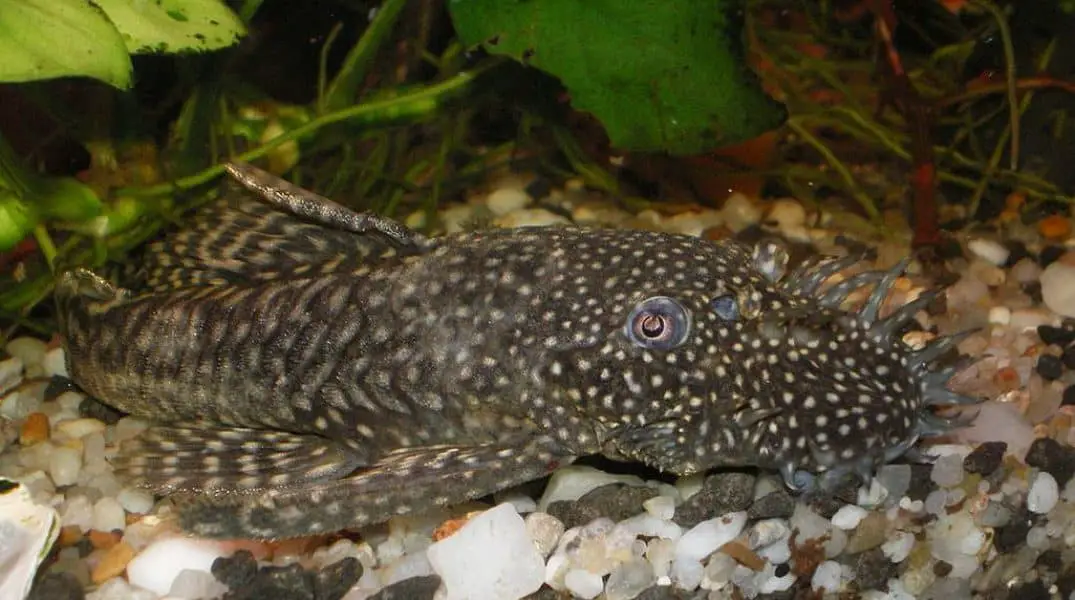
The most defining characteristics and also why this fish has been named so is their bushy nose appendages, which shoot from their snouts.
Generally, they begin appearing when these fishes reach maturity, at nearly six months of age.
The ‘bristles’ can be found in every Bushynose Plecos. But, they are comparatively more prominent in males. They appear longer and grow higher right on their head.
In the case of females, the bristles are a little subdued, and it sprouts out near their mouth area.
Bushynose Plecos have their mouth situated on the bottom of their bodies. Owing to this, it becomes easy for them to eat algae from any substrate.
Also, it helps them attach onto vertical surfaces. Compared to other types of Plecos, Bushynose has slightly elongated lips.
These fishes are one of the best Amano Shrimp tank mates. Other tank mates that you may consider include species like Guppy, Neon Tetras, and Platys, and so on.
Corydora Catfish
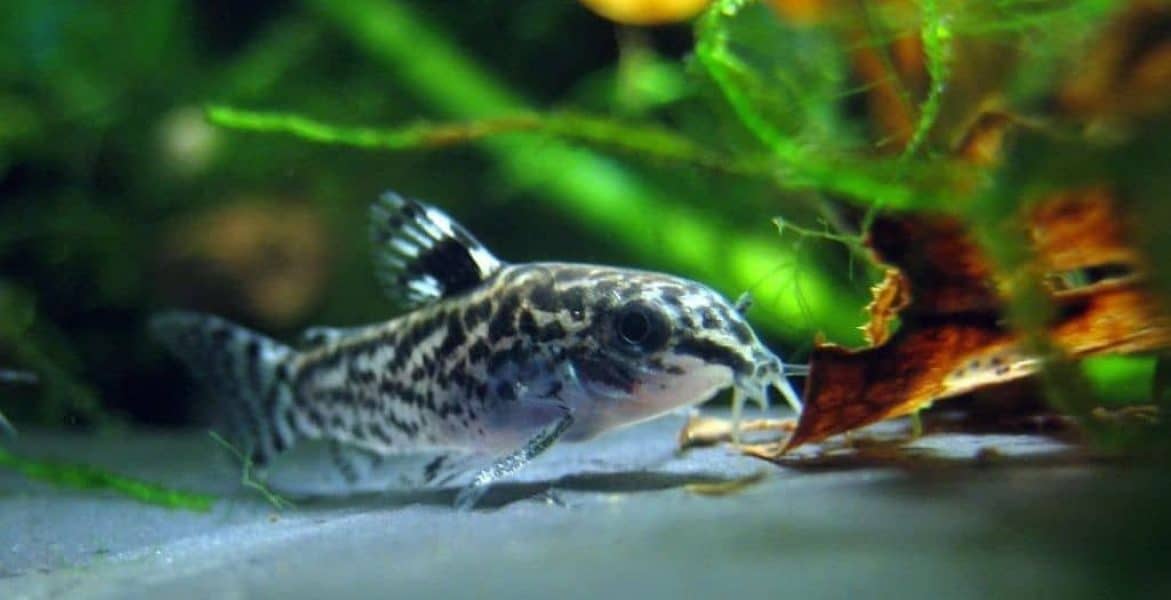
Also known as Cory Fish, Cory Cats, and Cory Catfish, Corydora Catfish are immensely popular freshwater fish among hobbyists.
These fishes are known as armored fish because of the plates of a bone-like material that runs through the length of their body.
There are more than 170 species of Corydoras, and they belong to the Callichthyidae family.
Just like other Catfish, the face of Corydora Catfish too has three pair of barbels that helps them find food in the sand. Also, they have wide eyes, with a ring around them that makes them look adorable.
Most community tank fish can be selected as tank mates for your Corydora Catfish provided they are not aggressive in nature.
Swordtails, Tetras, Otocinclus Catfish and other Corys will be a perfect fit.
You can include Vampire Shrimp, Amano Shrimp, Ghost Shrimp, Red Cherry Shrimp, and Bamboo Shrimp in your community tank as well.
Danios
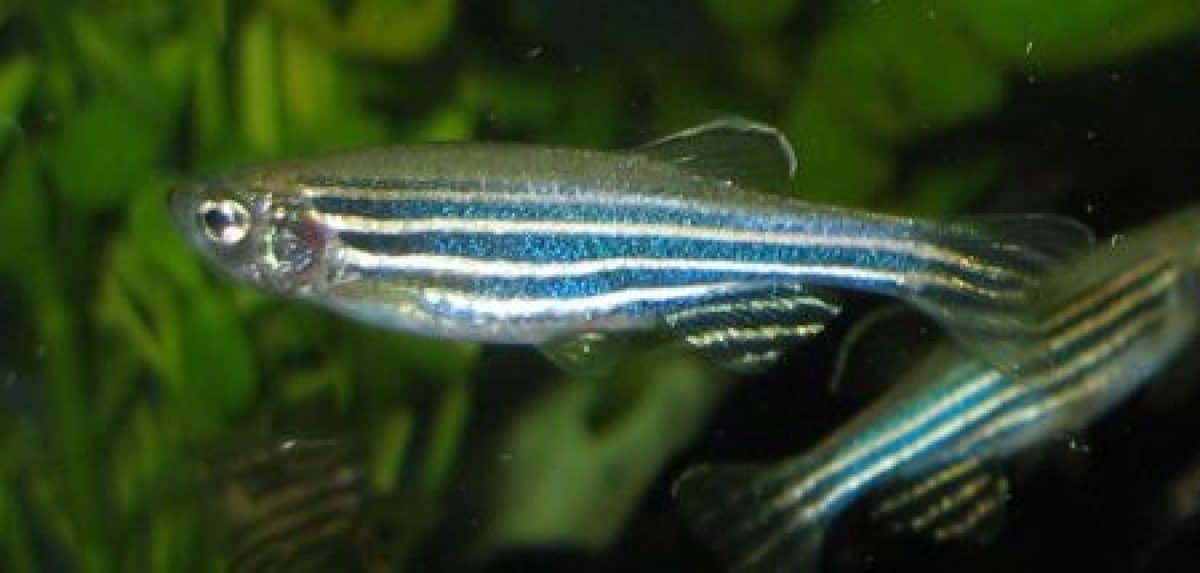
Danios are popular schooling fish and belong to the Cyprinidae family. Most species are surface-oriented and grow not more than 2-inches.
However, there are some, like Giant and Danglia Danios that can grow as big as 5-inches in length.
These fishes are hardy and can tolerate a good range of water chemistry and temperature. Thus, they make a good option for an aquarium that is newly set up and also for beginners.
They are very active by nature, but they are not usually harmful to other fishes. Various long-finned and color variants have been developed by opting for selective breeding.
Since Danios are on the go always, it will be best to select other active fishes as their tank mates.
Some good options include Platies, Black Skirt Tetras, small Barbs, Swordtails, Mollies, and other Danios. They also are one of the best Amano Shrimp tank mates.
Guppies

Guppies are among the best and most popular tank fish for experienced as well as beginner aquarists. They add lots of color to the aquarium, are easy to maintain, and peaceful.
There are nearly 300 varieties of Guppies, and you can find them in different sizes, color, and tail shapes. In the wild, female Guppies are generally grey, and males come with colorful spots and stripes.
But, due to breeders making new strains, there are plenty of aquarium varieties available with brighter colors and even more interesting patterns on their bodies.
Female guppies usually grow between 1.2 to 2.4 inches long, whereas the males are comparatively smaller and grow between 0.6 to 1.4 inches long.
These fishes can easily be kept along with other peaceful community varieties like Platies, Mollies, Corydoras, Gouramis, and also Amano Shrimps.
Hillstream Loaches
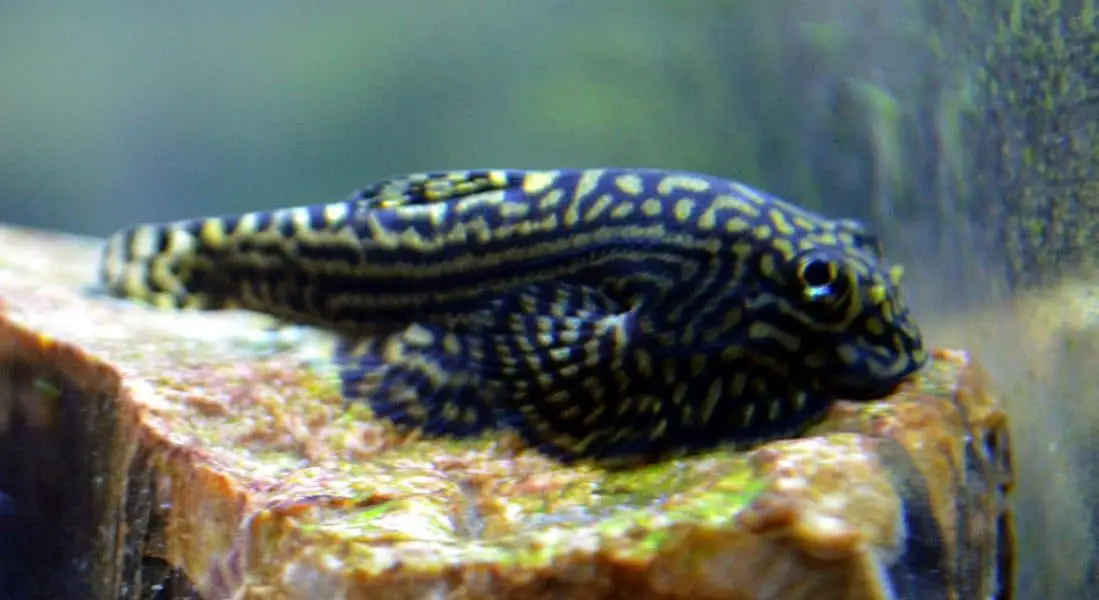
Hillstream Loaches are beautiful looking freshwater fish. Their special pattern and body shape makes them quite different from the others.
If you are interested in adding a unique critter to your Amano Shrimp community tank, then this makes a good choice.
These fishes look so attractive and different that you will surely want to spend hours just admiring their beauty. They have quite a busy pattern that covers their complete bodies.
The base coloration of Hillstream Loaches is light yellow/grayish with thick black stripes moving in random directions. These stripes are mostly linear on their dorsal and caudal fins.
Not only do they look attractive, but they are also easy to maintain. All you will have to do is keep a watch on the water levels, and that is it.
There are many Hillstream Loach tank mates that you can select from. Apart from Amano Shrimps, Rasbora and Danios too are popular choices.
Otocinclus

Otocinclus are commonly known as algae eaters. Algae is their natural food, and thus they are easy to feed. Also, they are easy to take care of, and thus a great option for beginners.
They are peaceful by nature and will prove to be one of the best Amano Shrimp tank mates.
These fishes belong to the Loricariidae family. There are nearly 19 Otocinclus species, and they come in varying colors, patterns, and sizes.
They are also known as ‘dwarf suckers’ and ‘Otos’.
Otocinclus fishes do not usually grow beyond 2-inches. The smallest species grow less than an inch, while the longest one will reach a maximum of 2.2-inches.
Their body has a cylindrical shape, and it narrows towards their caudal fin and head. On their head, they have a strong mouth with the help of which they latch onto surfaces.
If you have a community tank, there are many tank mates that you can select to be companions of your Otocinclus fish.
The choices include Guppies, Mollies, Dwarf Gourami, Corydoras Catfish, Cherry Barbs, Tetras, and Danios.
Ram Cichlids
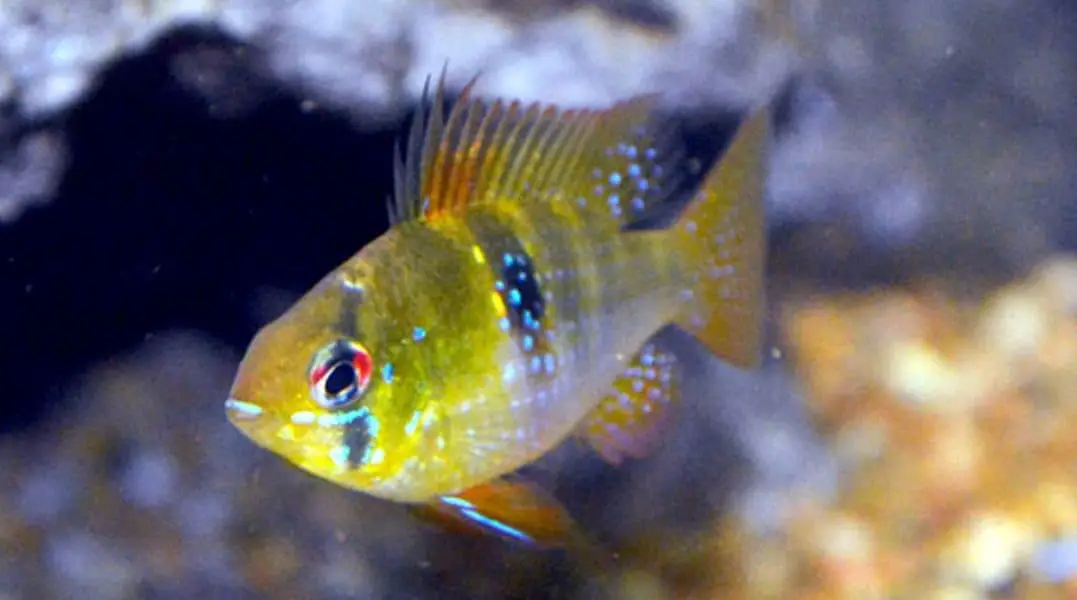
Ram Cichlids are small, peaceful, and beautiful. In aquariums, they attain a maximum height of around 2-inches.
This fish has a delicate oval shape with a snappy, bright-colored patterning, and long pointed fins.
Towards the front, they are yellowish in color, and as it moves back, it blends into a beautiful whitish-blue.
Edging the yellow fins and on the forehead, the Ram Cichlids have an orangish-red color.
The females have a pinkish-orange belly, which only adds to their good looks. These fishes have been bred to have a huge variety with different color forms.
Some of the good tank mates of Ram Cichlids include Silver Dollars, Amano Shrimps, Neon Tetras, and Plecostomus.
Remember, while selecting tank mates, you have to consider if each of the fishes you have selected is compatible with one other.
Cardinal Tetras
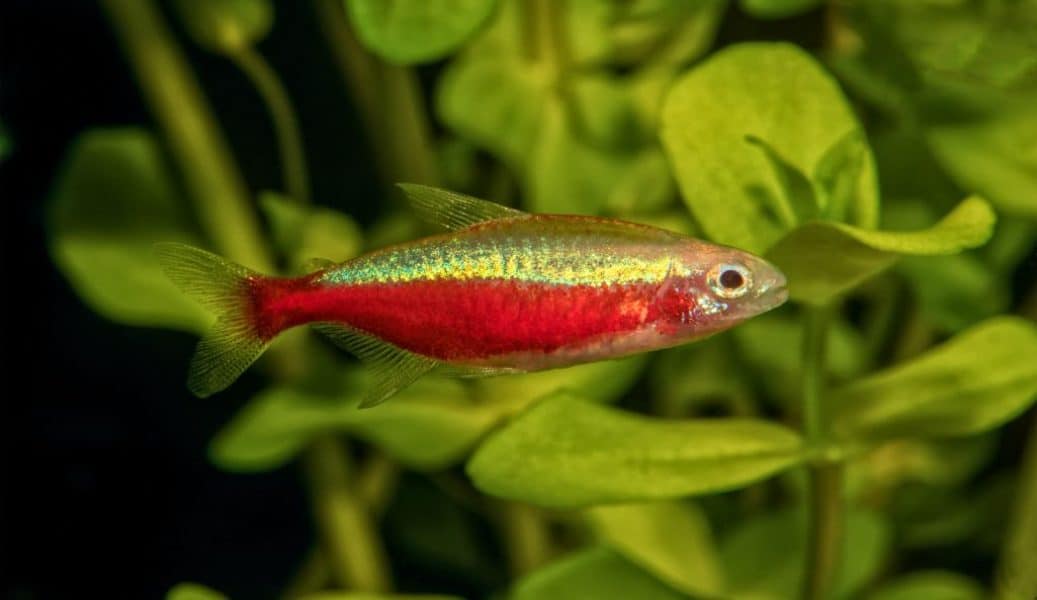
Cardinal Tetras are an ideal beginner fish. They are easy to take care of, colorful, and hardy.
This little fish only grows about 2-inches long and what makes them most attractive is their color. They typically have a blue and red body.
While a blue stripe sits on top, a red stripe runs along their lower side, right from their head to their tail. The colors are immensely bright, and this is why they are a feast to watch.
These fishes are many a time confused with Neon Tetras as they have similar coloration. The main difference is that Neon Tetras have a red stripe that goes only halfway up their bodies.
Also, their blue stripe is not as vibrant as it is in the case of Cardinal Tetras.
Cardinal Tetras stay around their own shoals and almost always ignore anything else present in the aquarium.
This is why you can keep them with most other fishes that are peaceful by nature.
Some ideal tank mates include Zebra Danios, Neon Tetras, Dwarf Gourami, Guppies, Angelfish, Mollies, and Amano Shrimps.
Platies
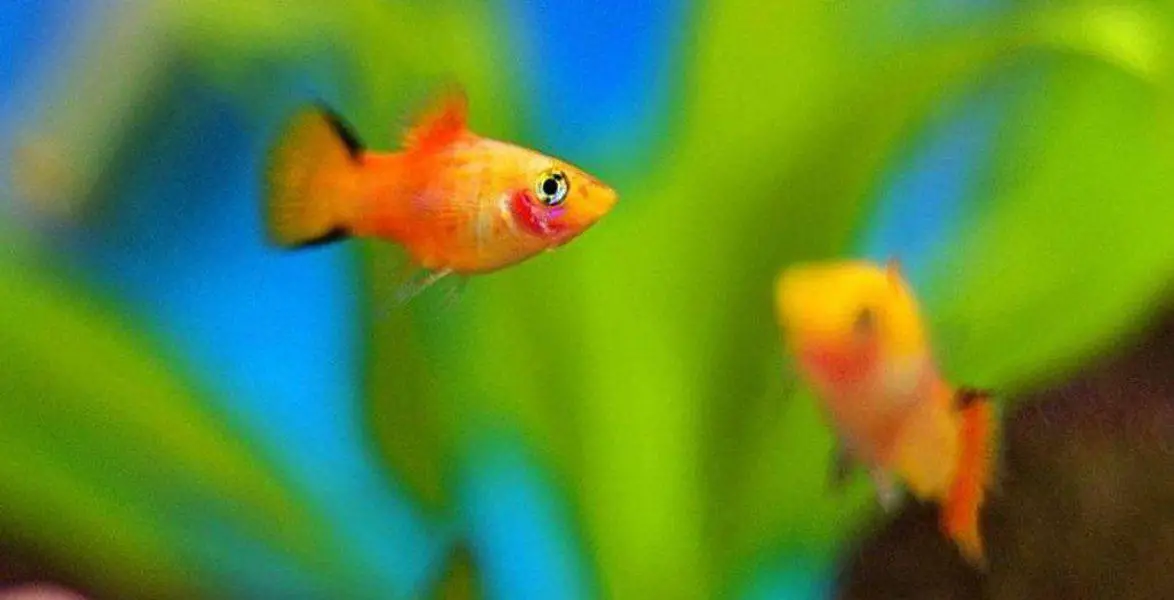
Platies are a good option for beginners. They are easy to manage, peaceful, and thus perfect for community aquariums.
These fishes are mesmerizing with their bright colors. There are various breeds and hybrids within this species, and you can find them in many, many shades.
Platy fish are laterally flattened, small, and have small short fins, and their tail is shaped like a fan.
You can find Platies in many different colors, including green, blue, white, and yellow.
Though Platies are peaceful and make perfect tank mates, they also are very active. They love swimming in groups, and males can be seen, many a time, fighting among themselves.
Some ideal tank companions for Platy fish includes Swordtails, Guppies, Mollies, and Amano Shrimps.
Mystery Snails
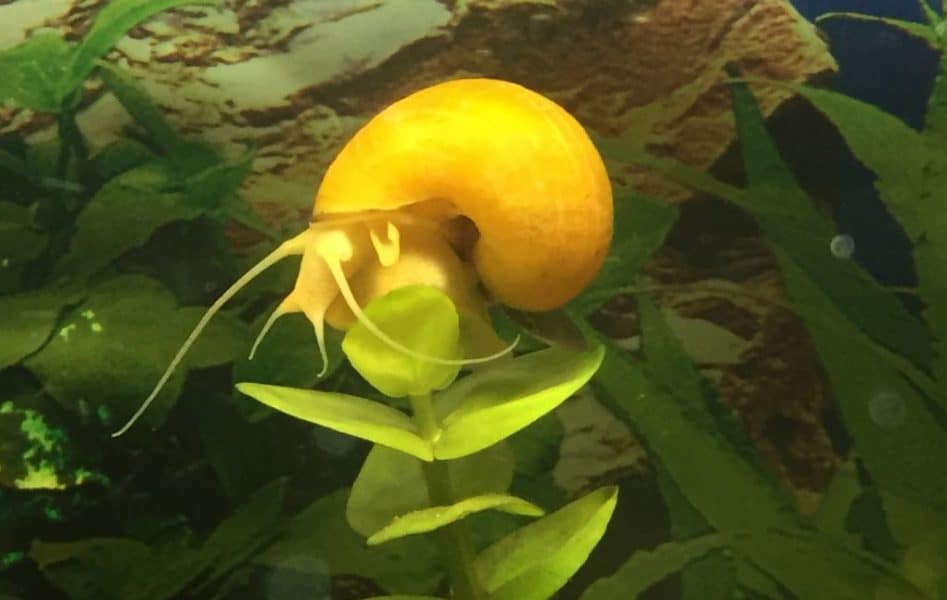
Mystery Snails are a popular addition to most freshwater tanks. They are peaceful, slow-moving, and also perform some cleaning job for you.
You can find these snails in many different colors. The most popular ones are the gold, ivory and brown variants.
Surely, these shades will help make your aquarium look very attractive.
Since they grow to a maximum of 2-inches in diameter, you can add them to small as well as big tanks.
Some ideal tank mates for your Mystery Snails include Killifish, Guppies, and Tetras. They will peacefully let the snails do their own business.
You can even add peaceful invertebrates in your community tank, including Amano Shrimp, Ghost Shrimp, and Cherry Shrimp.
White Cloud Mountain Minnows
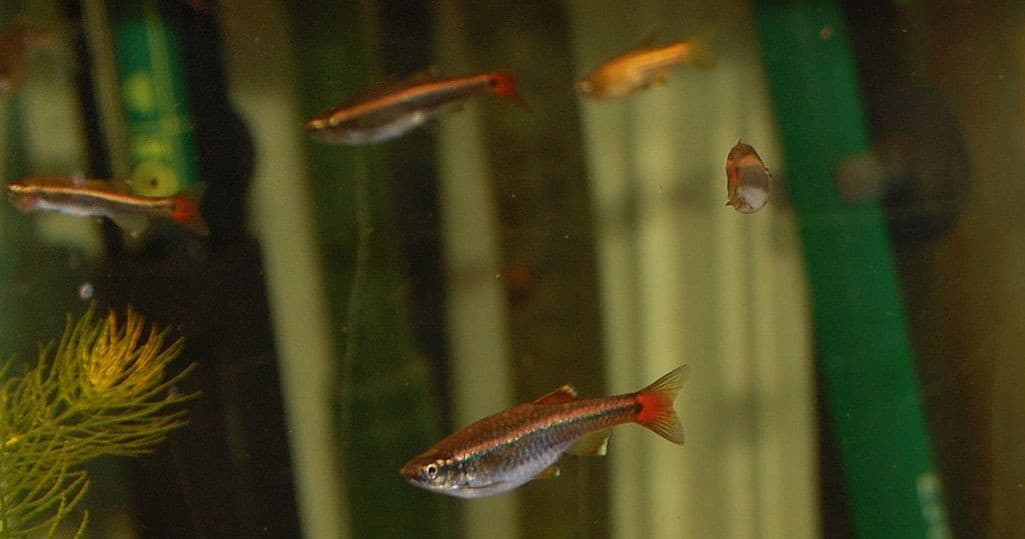
White Cloud Mountain Minnows are colorful, small, and beautiful. They grow to a maximum of 1.5-inches, and the males are more colorful and slender compared to the females.
They are middle or top-dwelling fish, and you will rarely find them in the bottom part of your aquarium.
These fishes have a dart-like shape, with slim, streamlined bodies, and pointed snouts. Their ventral and dorsal fins are nearly triangular, and it points to the back of their bodies.
Some ideal tank mates for White Cloud Mountain Minnows include Rosy, Cherry, and Gold Barb.
You can also keep them with Dojo and Horseface Loaches. Gouramis, Paradise Fish and Amano Shrimps too make good tank mates for these fishes.
Harlequin Rasboras

Harlequin Rasboras are a perfect example of an amazing shoaling fish that you can add to your aquarium.
They are attractive fishes, which when you add to your community tank, will add a gorgeous splash of colors.
These fishes have very little care requirements and are not even demanding. Taking care of them is very easy.
As long as you offer them a simple diet and keep the tank clean, they will easily thrive.
The Rasboras grow not beyond 2-inches, and so you can keep quite a few in your aquarium.
As Harlequin Rasboras are peaceful by nature, they will stay out of the way of other fishes. So, you can easily keep other peaceful fishes as their tank mates.
Some good tank mate options include Guppies, Dwarf Gourami, Danios, Corydoras Catfish, Cherry Barbs, Mollies, Tetras, and also Amano Shrimps.
Ghost Shrimps
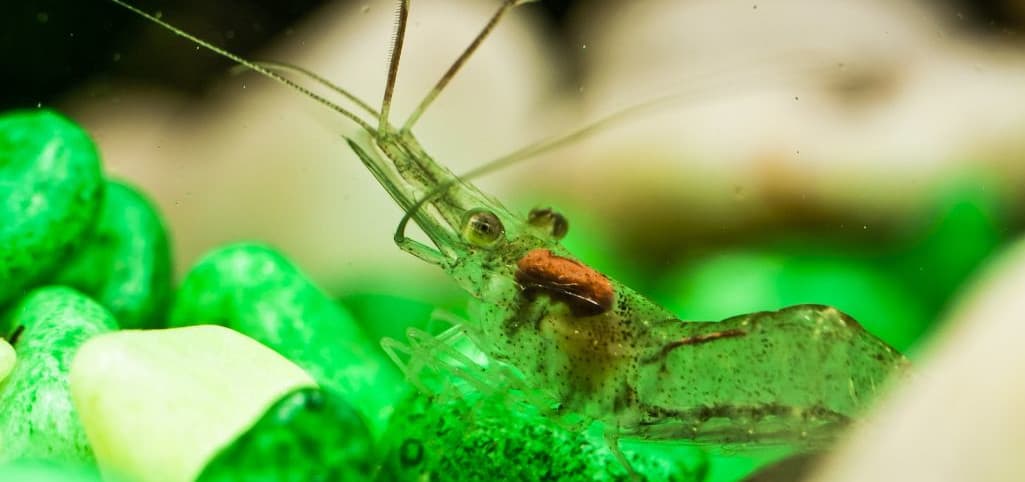
Ghost Shrimps or Glass Shrimps, as they are also known as, are freshwater crustaceans that are a favorite of most aquarists.
They are easy to take care of and non-aggressive by nature.
As their name suggests, Ghost Shrimps are generally clear in color, and this helps them evade predators. Some specimens have various colored dots on their backs.
They grow up to about 1.5-inches, but females are larger compared to the males.
Some good tank mates for Ghost Shrimps include Hatchetfish, Tetras, Cherry Barb, Danios, Kuhli and Zebra Loaches, Corydoras, and Amano Shrimps as well.
Recommendations for Your Community Tanks with Amano Shrimps
Video: “AMANO SHRIMP CARE”
Temperature and pH Levels
The ideal temperature range for your Amano Shrimp community tanks is between 70 – 80 degrees Fahrenheit.
If the temperature goes high, it will increase the metabolism and activity of the Amano Shrimps. And, this can result in algae reduction.
As far as the pH is concerned, keep it at neutral levels between 6.5 and 7.5. This will help maximize the metabolism and health of Amano Shrimps. The general hardness should be around 6-8 dkh.
Ideal Diet
Since Amano Shrimps are omnivorous invertebrates, they need a properly balanced diet. They, thankfully eat algae, leftover food particles, and decaying plant matter already present in the community tank.
However, they still need supplementation. The quantity of extra food that you will add depends on the density of the Shrimp, the size of your tank, and also the other companion fishes present.
Remember, if it is a community tank, you have to give equal attention to the dietary needs of all lives within.
Tank Mates to Avoid
Now that you are aware of the best Amano Shrimp tank mates, you also need to learn about those fishes that you must completely avoid. You need to clearly stay away from aggressive and larger fishes.
Any fish that has a mouth big enough to fit in Amano in their mouth cannot be added to the community tank.
Some of the fishes that you need to avoid include Jewel Cichlids, Discus, Jack Dempsey, Knifefish, Arowana, Pacu, Goldfish, and Silver Dollars.
If the fishes are big, semi-aggressive or aggressive, then they will most likely eat your Shrimp at the very first chance that it gets.
So, if you have always wanted to add an Amano Shrimp as well as a Green Terror in your tank, you need to think again. The idea certainly sounds amazing, but it will end up being tragic.
Conclusion
Amano Shrimps are great algae eaters and can even handle things including Black Beard Algae and also other cleaning crew that critters may leave behind.
Furthermore, they are peaceful, and you do not really need to do much to take care of them.
Unlike some other shrimps, Amano can adapt themselves and thrive in different types of water parameters. However, you will indeed need to maintain an established and well-cycled tank.
Also, what is amazing is that they can prove to be good companions to many other peaceful fishes.
So, if you desire to build a beautiful community tank along with Amano Shrimps and a few other non-aggressive varieties, your dream can turn true for sure.
And, now that you also are aware of the best Amano Shrimp tank mates, you will end up adding only those that will peacefully grow and thrive together.




